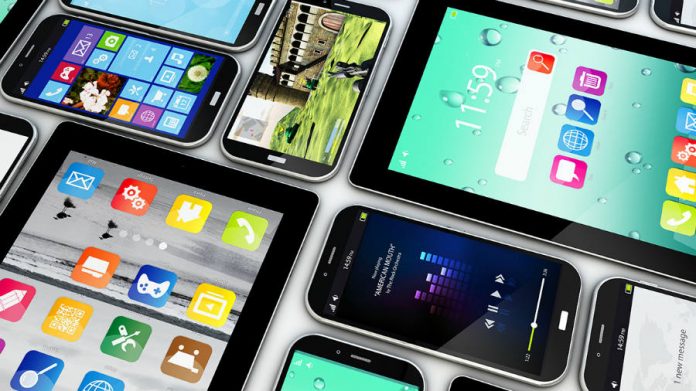
First, let's check iPhone 6's specs
Apple remains as a second major phone manufacturer thanks to the iPhone. Its latest releases, the iPhone 6, 6S, and 6S Plus, are widely popular among iOS fans.
Some of the highlights of these devices rest on their easy usage and minimal but outstanding design, as well as optimal processor performance and RAM management.
However, there’s plenty of iPhone competitors out there, specially Android-Based handsets. What follows is a list of smartphones featuring better specs than Apple’s phones. First, here are each of the iPhone 6 specs.
The standard iPhone 6 has Apple’s A8, a dual-core 1.4 GHz 64-bit processor, with an M8 motion co-processor and 1GB of RAM. The handset’s screen size is 4.7-inch with a Retina HD LCD resolution display of 1,334 x 750. It also features a primary 8MP camera.
Next is the iPhone 6S, with the same 4.7-inch display, but featuring the more powerful A9 chip with 64-bit architecture. It also moves up to an M9 co-processor and 2GM of RAM. The 6S includes an upgraded 12MP camera on its rear, while a 5MP frontal shooter handles selfies.
The larger iPhone 6S Plus is 5.5 inches and comes with an enhanced 1920 x 1080 resolution. Despite having the same cameras as the 6S, the iPhone 6S Plus includes Optical Image Stabilisation (OIS).
All three phones have storage capacity versions of 16GB, 64GB, and 128GB.
Samsung Galaxy 7S gave Samsung the #1 spot in the market
Samsung developed its Exynos 8890 octa-core chip for the Galaxy 7 outside the U.S. costumers get the Qualcomm quad-core Snapdragon 820 with Adreno 530 GPU version. Both phones come with 4GB RAM memory, two GBs more than the iPhone 6S and 6S Plus. Having more cores and RAM translates into better performance for the Galaxy 7S.
The 5.1-inch Super AMOLED display of the Galaxy 7S takes on the iPhone 6/6S 4.7-inch IPS LCD screen. AMOLED displays offer richer blacks by charging pixels to generate colors, and turning off relevant pixels.
On the other hand, the LCD tech featured on the iPhone 6 turns on all the pixels, causing it to show a grayer look. Also, the Galaxy 7S has a superior Quad HD resolution (2,560 x 1,440) than its competitor’s full HD display.
Although both phones can handle a maximum storage capacity of 128GB, the Galaxy S7’s 32GB native space wins over the entry-level 16GB iPhone 6.
The iPhone 6S and the Galaxy 7S have 12MP cameras on its rear and 5MP shooters on its front, but a fundamental difference is their aperture. The Samsung handset provides better low-light pictures thanks to its F/1.7 lens – Apple’s phone has a f/2.2 aperture-.
HTC 10 is gaining notoriety in 2016
Another smartphone with a superior Snapdragon 820 chip and Adreno 530 GPU. Complemented with 4GB of RAM, the HTC 10 provides multitasking slightly above the iPhone 6, according to benchmark tests.
The HTC handset has an even bigger screen size than the Galaxy 7S (5.2-inch). It also packages more pixels than the iPhone 6 thanks to its Super LCD5 QHD (2,560 x 1,440) display.
The HTC 10 ties with the iPhone 6S and 6S Plus with a similar 12MP rear shooter for 4K video capture, as well as a 5MP front camera for selfies. However, the Taiwanese phone has the advantage of featuring an OIS to reduce blurriness, while Apple only offers this option for the iPhone 6S Plus.
Google Nexus 6 features beat Apple’s champion
Despite the Nexus 6 doesn’t boast the same processing power of the Galaxy 7S or the HTC 10. Its 2.7 GHz quad-core Snapdragon 805 SoC with 3GB of RAM beats the iPhone 6 series significantly.
Also, Google scores another point, as it features a 32GB storage capacity against the entry-level 16GB iPhone.
With is impressive 5.9-inches screen, the Nexus 6 is even larger than the iPhone 6S Plus. It also offers a QHD AMOLED display for more contrast and detail.
The Google handset comes with a 13MP rear camera and OIS, as well as a better f/2.0 aperture. However, the iPhone 6S and 6 Plus might gain a point over the Nexus, as it does not have a frontal shooter.
Huawei P9’s release brought the Kirin 995 processor, a fierce competitor
As with Samsung and Apple, Huawei designed the Kirin 995 64-bit processor. According to several benchmarking databases, this chip not only surpasses the iPhone 6’s A8 and A9 chips. In some areas, the Kirin also wins over Qualcomm’s Snapdragon 820 and Samsung’s Exynos 8890.
Huawei offers two versions of its phone, the 32GB entry-level with 3GB of RAM, and a 64GB version with 4GB of memory. Both models support storage expansion up to 128GB via MicroSD cards.
The P9 has a 5.2-inch screen with 1,920 x 1080 resolution. When it comes to cameras, the Huawei handset features an outstanding Dual 12MP and single 8MP shooters for its rear and front respectively.
LG’s modular G5 also has better specs than the iPhone 6 models
LG enters the list with the G5. The handset comes with a Snapdragon 820 chip with all of its features -Adreno 530 GPU and 4GB of RAM-. It also offers a larger native storage capacity of 32GB, and can be expanded up to 200GB with MicroSD cards.
The G5’s screen size is 5.3-inches with QHD display and 544 PPI density, boasting more sharpness than the iPhone 6 series. Besides, the LG handset manages Dual rear shooters of 12MP and 8MP respectively, as well as an 8MP front camera for selfies. Each shooter has OIS and a laser autofocus.
Although the smartphone has a relatively small 2800mAh battery, it still manages to beat the iPhone 6/6S pack (1715mAh) and the 6S Plus (2750mAh).
Source: Wall Street Journal










